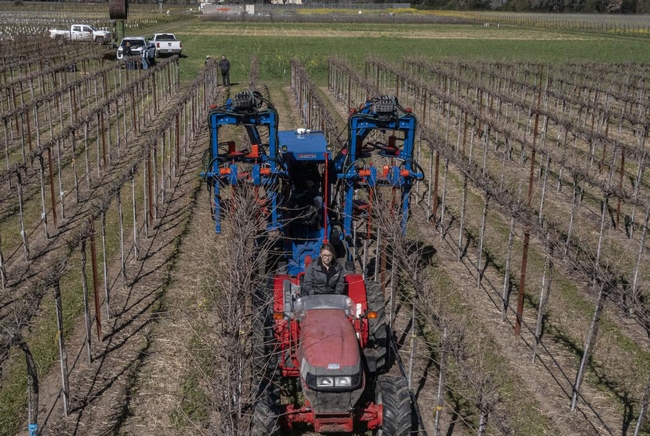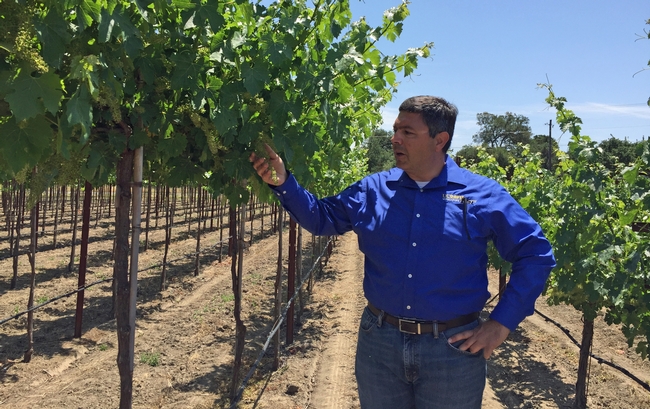
Posts Tagged: labor
No Labor Day Holiday for Honey Bees
On Labor Day, a federal holiday, we celebrate the our country's labor movement, our gratitude, and...
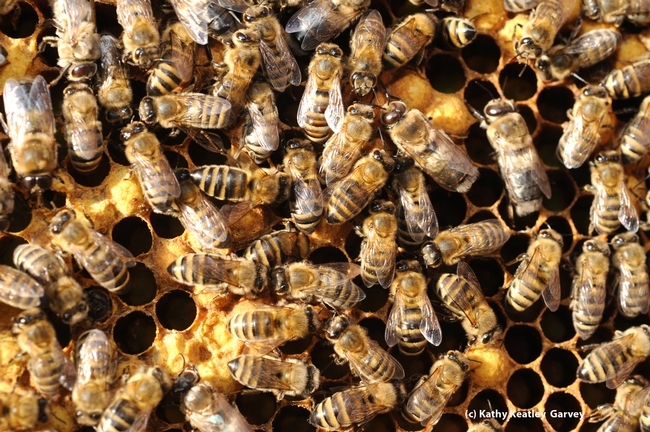
Worker bees are aptly named. They comprise most of the bees in the colony and do most of the work. (Photo by Kathy Keatley Garvey)
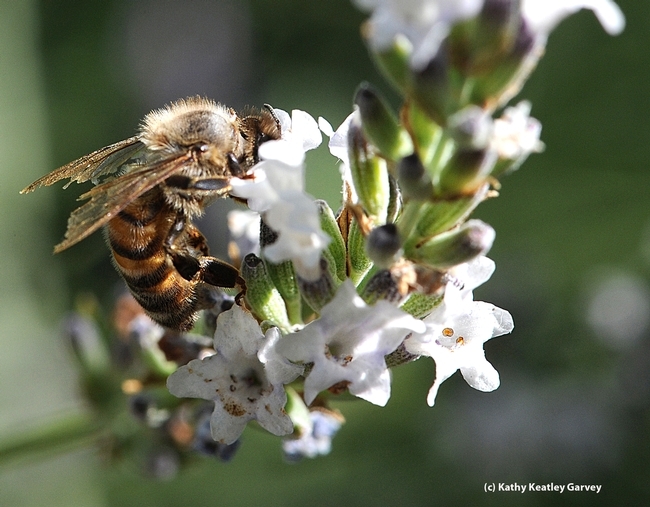
This aging worker bee is all tattered and torn. (Photo by Kathy Keatley Garvey)

Foraging can be dangerous. Here a praying mantis has just nabbed a worker bee. (Photo by Kathy Keatley Garvey)

A crab spider feeding on a honey bee. Crab spiders are ambush predators. (Photo by Kathy Keatley Garvey)
Machines can help wine grape industry survive labor shortage
Wine grape growers in California and elsewhere face increasing labor costs and severe labor shortages, making it difficult to manage and harvest a vineyard while maintaining profitability. Growers are increasingly turning to machines for pruning, canopy management and harvesting, but how well these practices are executed can substantially affect yield and quality. A new review by researchers at the University of California, Davis, published in the journal Catalyst, provides guidelines for growers to make the best use of machines.
“Wine grape laborers have been virtually nonexistent. People don't want to work in vineyards anymore because it's remote, tough work,” said Kaan Kurtural, UC Davis professor of viticulture andenology andUC Cooperative Extension specialist. “There is now machinery available to do everything without touching a vineyard.”
Kurtural has designed a “touchless” experimental vineyard at the UC Davis Oakville Station to help growers understand how machines can help them cope with the labor shortage. While machines reduce the need for seasonal manual labor, they do not eliminate it. The degree of labor reduction depends on growing region, grapevine type and the number of practices growers mechanize.
The review provides guidance on using machines for winter pruning, canopy management and harvesting as well as how to design a grape vineyard for machines before planting. Videos showing the operation of different types of machinery and practices can also be found in the review.
Economic savings, quality grapes
About 90% of the wine grapes crushed in the U.S. are mechanically harvested. Previous studies have found about a 50% savings in labor costs from using machines to harvest instead of hand harvesting.
“Using more mechanization in a vineyard beyond just harvesting can also reduce labor costs without affecting grape quality.” Kurtural said.
Mechanical pruning, for example, can save between 60% to 80% of labor operation costs per acre compared to manual pruning alone. One experiment in the San Joaquin Valley, where more than 50% of California's wine grapes are grown, also showed using mechanical canopy management machines to manage merlot grapes resulted in twice the amount of color. The more color, or higher anthocyanin concentrations, the better the quality. It can significantly improve returns from vineyards in California's heartland.
Kurtural said there are machines available to manage canopies, including machines for leaf removal, shoot thinning and trunk suckering. Kurtural noted that the machines are American made, developed by researchers at the University of Arkansas and commercialized by manufacturers in Fresno and Woodland, California.
The review was co-authored by Matthew Fidelibus, UC Cooperative Extension viticulture specialist at UC Davis, based at UC Kearney Agricultural Research and Extension Center. Financial support for the research came from the American Vineyard Foundation and Bronco Wine Company.
Original post at https://www.ucdavis.edu/news/machines-can-help-wine-grape-industry-survive-labor-shortage.
Happy Labor Day from a Gulf Fritillary
Happy Labor Day! And what an appropriate time to post an image of a...

A Gulf Fritillary, Agraulis vanillae, laying an egg on Labor Day weekend in Vacaville, Calif. (Photo by Kathy Keatley Garvey)
The Laborious Honey Bee
Today is Labor Day 2019, a federal holiday celebrated the first Monday of September. However, "the...
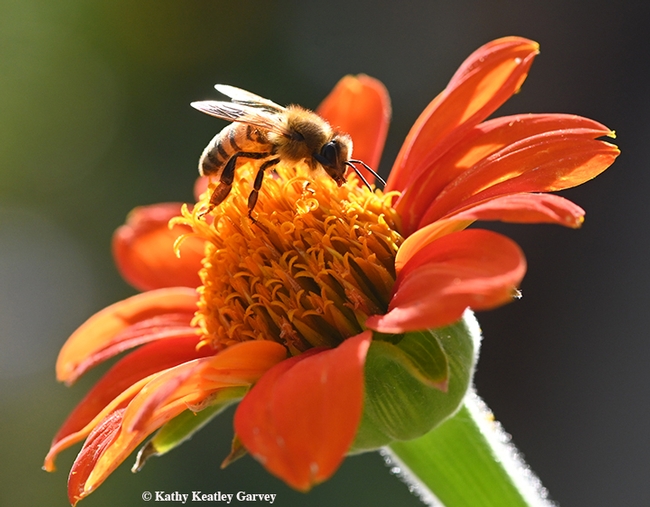
A worker honey bee forages on a Mexican sunflower (Tithonia) in the magic hour, the hour before sunset. (Photo by Kathy Keatley Garvey)
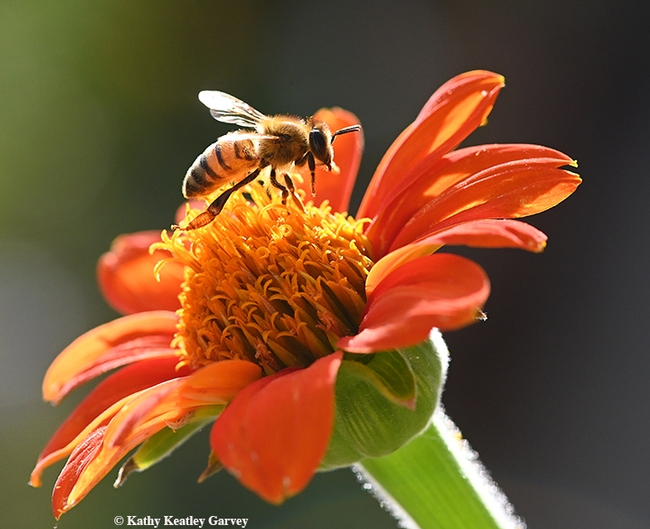
Illuminated by the late afternoon sun, the worker bee prepares to fly to another Tithonia blossom. (Photo by Kathy Keatley Garvey)
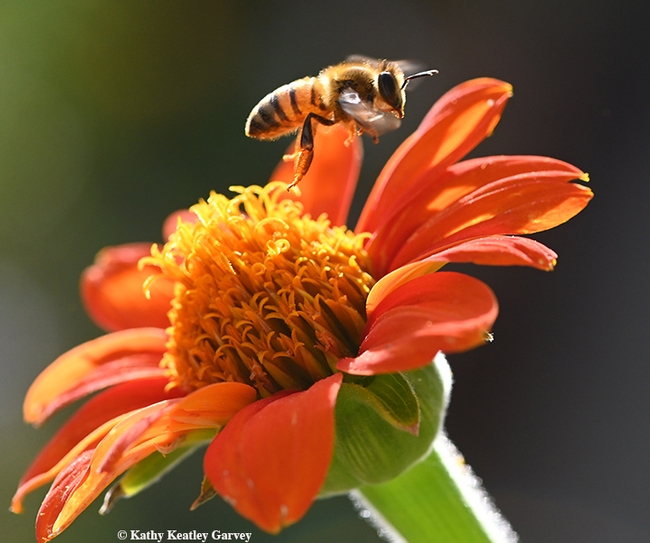
A worker bee takes flight, lifting over a Mexican sunflower (Tithonia). (Photo by Kathy Keatley Garvey)
The winegrape industry is well suited to mechanized production
A major expense in producing winegrapes is labor. Two UC Cooperative Extension experts appeared on the Jefferson Exchange radio program to explain how mechanization of pruning, leaf removal and shoot thinning, combined with mechanized harvesting widely implemented decades ago, will dramatically reduce the need for labor in California winegrape production.
"The minimum wage is going to increase to $15 per hour in 2022," said George Zhuang, viticulture advisor with UCCE Fresno County. Besides, it is getting more challenging for growers to find enough workers due to labor shortages and higher wages in other fields, such as construction.
The machinery for mechanized vineyards requires an investment of about $100,000, said Kaan Kurtural, UCCE viticulture specialist. At that cost, growers begin to break even after a year.
The biggest obstacle to mechanization is the way winegrape vineyards have traditionally been trellised. The cross arms get in the way of machines as they go through the vineyards. In a recent research project by Zhuang and Kurtural, the scientists converted a traditional system to single high wire and managed it with mechanical equipment.
"It was more profitable ... with the same, if not better, quality and value at the farm gate," Kurtural said. "The writing is on the wall for growers to adapt to this as quickly as possible."
Host Geoffrey Riley asked whether the labor savings will result in cheaper wine. Kurtural laughed.
"No," he said. "Wine prices are set by market demand. I don't think wine is an expensive beverage."

